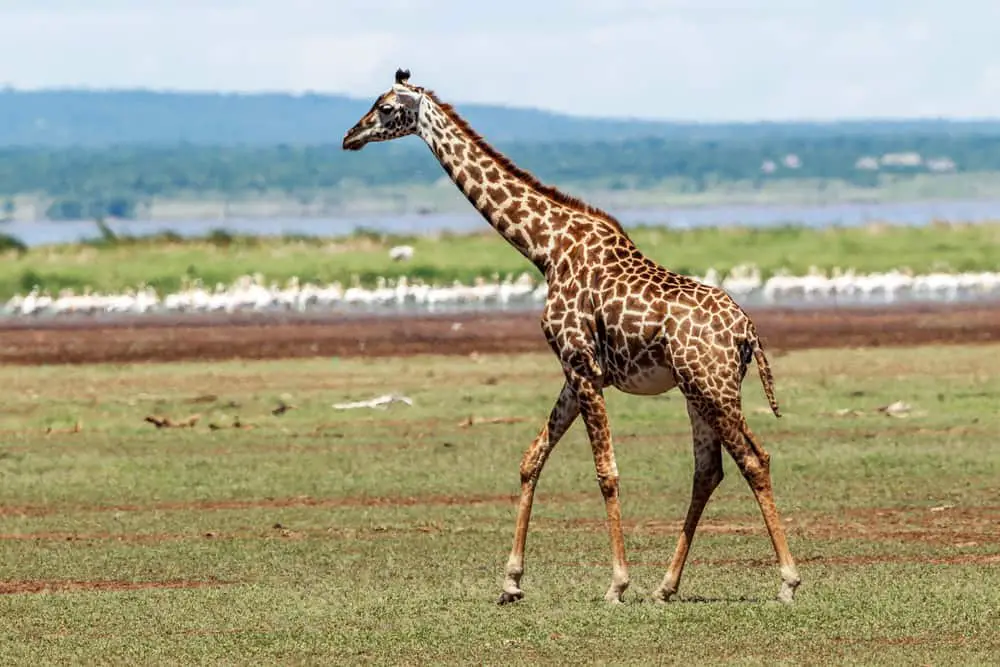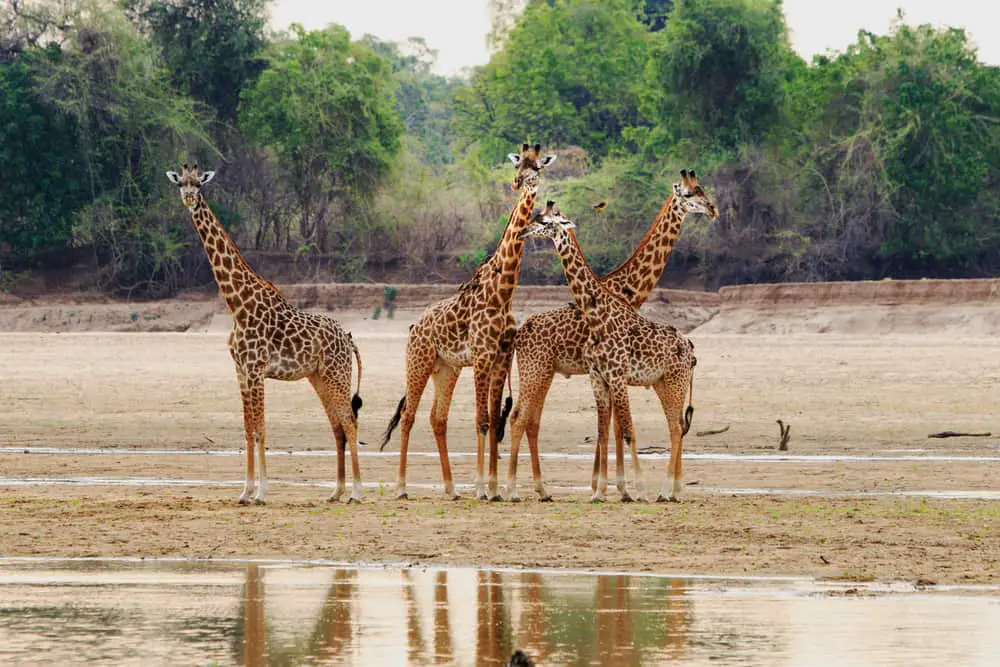Giraffes are fascinating animals that possess a unique set of sensory abilities. In order to gain an understanding of their behavior and perception, it is important to examine the senses they have adapted over time.
The structure, physiology, and adaptation of giraffes’ senses differ from other mammals due to the environment in which they live. Their eyesight is particularly well developed with excellent binocular vision allowing them to survey large areas for predators or food sources at great distances.
Additionally, their sense of smell has been observed as being more sensitive than most other ungulates. These specialized adaptations allow them to detect threats and search for food efficiently across vast savannahs.

Eyesight
Giraffes are well-known for their impressive eyesight. The giraffe’s two large, brown eyes can measure up to 10 cm across and provide the animal with a wide field of vision that enables it to spot predators from miles away. Studies have found that giraffes can see in color, discern shapes and movements better than other mammals, and may even be able to detect ultraviolet light.
A lesser known fact about the giraffe is its ability to regulate its body temperature by using its long neck as an efficient heat exchanger. By stretching out its neck and exposing more surface area, a giraffe can either cool down or warm up depending on the environment.
This allows them to survive extreme temperatures in Africa’s open savannah grasslands which often reach over 40°C during the day. Furthermore, this adaptation helps them conserve energy while searching for food sources since they don’t need as much time basking in direct sunlight to regulate their body temperature compared to other animals in similar habitats.
Hearing
Giraffes, like many other animals in the African savanna, rely heavily on their hearing to detect danger and communicate with each other. Their ears are large, allowing them to effectively pick up sound waves from far distances. Giraffe hearing is highly sensitive and they can hear sounds of very low frequencies (below 20 Hertz) that are not audible to humans. They also have a unique ability to process directional information within these lower frequency ranges that enables them to pinpoint the location of a potential predator or noise source.
In terms of acoustic ecology and soundscape design, giraffes are capable of distinguishing between different types of noises based on their characteristics such as pitch and volume. This allows them to recognize specific sounds produced by predators or prey species, which helps them determine where food is located or when there is an imminent threat nearby.
Research has shown that giraffes use calls at higher frequencies for communication purposes than those used for alerting others about potential threats. As a result, giraffes possess an impressive set of auditory skills that allow them to navigate the environment around them without relying solely on vision:
- A keen sense of directionality enabling it to localize sound sources
- The capability to differentiate between various types of sounds
- The ability to identify relevant signals amidst background noise
- The ability to detect changes in the environment such as temperature, air pressure, and humidity
Smell
Giraffes have an incredibly keen sense of smell and can detect scents from up to a mile away.
Much like humans, they use this heightened sense as another form of social identity—in fact, it has been shown that giraffes are able to distinguish their own species from other animals by scent alone.
This is also used in identifying potential mates and recognizing members of the same herd or family.
In addition, the olfactory senses help them identify food sources more quickly; for example, when browsing for leaves among dense foliage, a giraffe’s highly developed sense of smell allows them to locate preferred diet items such as acacia trees much easier than if they relied on sight alone.
While these skills may seem innate to some, many experts note that years of evolution have molded the giraffe’s keen smelling abilities into what we now know today.
Giraffes’ Predators Exposed: Unveiling the Natural Foes
Touch
Giraffes have a sophisticated sense of touch, which allows them to respond to their environment and socialize with others.
The skin on their necks is particularly sensitive, as it contains numerous nerve endings that are important for communication during courtship rituals.
This sensitivity also helps giraffes detect vibrations in the ground from potential predators or mates.
The adaptation of this sensory system has enabled giraffes to survive in challenging environments by improving their ability to identify threats and locate food sources.
Furthermore, these same sensations help in maintaining contact between individuals within a herd, promoting social cohesion amongst members.
Giraffes use tactile cues such as grooming and rubbing against each other to strengthen relationships within the group.
As a result, they can better protect themselves from external dangers and take advantage of cooperative opportunities when exploring their surroundings.
Giraffe Lifecycle: From Calf to Towering Adult
Taste
Giraffes have a strong sense of taste which is used to determine their dietary preferences. They are known for their long tongues, which can reach up to 18 inches in length and help them grab food from trees or the ground.
Giraffe tongues contain numerous papillae, small bumps that give it a rough texture and grip on leaves, twigs and other vegetation. The tongue also has receptors for sour, bitter and salty tastes as well as an enhanced sensitivity to sweet tastes. This helps giraffes identify nutritious foods such as fruits over less desirable ones like grasses and shrubs.
In addition to its powerful sense of taste, the giraffe’s highly developed olfactory system allows it to detect water sources from miles away using scent. Their long necks allow them access to foliage at heights inaccessible by other animals, giving them an advantage when seeking out preferred foods with higher nutrient content.
With these abilities combined, giraffes are able to thrive in savanna environments where resources may be scarce.

Conclusion
Giraffes exhibit remarkable senses that allow them to survive in the wild. Their eyesight is superb, able to detect movement from a long distance away and pick out details even in low light conditions.
They possess an acute sense of hearing, allowing them to locate potential predators before they become aware of their presence.
Giraffes also have an excellent sense of smell which assists them with navigation and locating food sources.
Touch plays a vital role for giraffes too, as it allows them to investigate objects without using their sight or smell.
Lastly, giraffe taste buds are relatively weak compared to other animals but still play an important role in the selection of certain foods such as fruits and leaves.
All these senses come together to provide giraffes with a unique perspective on their environment that has allowed them to live successfully in the wild for centuries.

